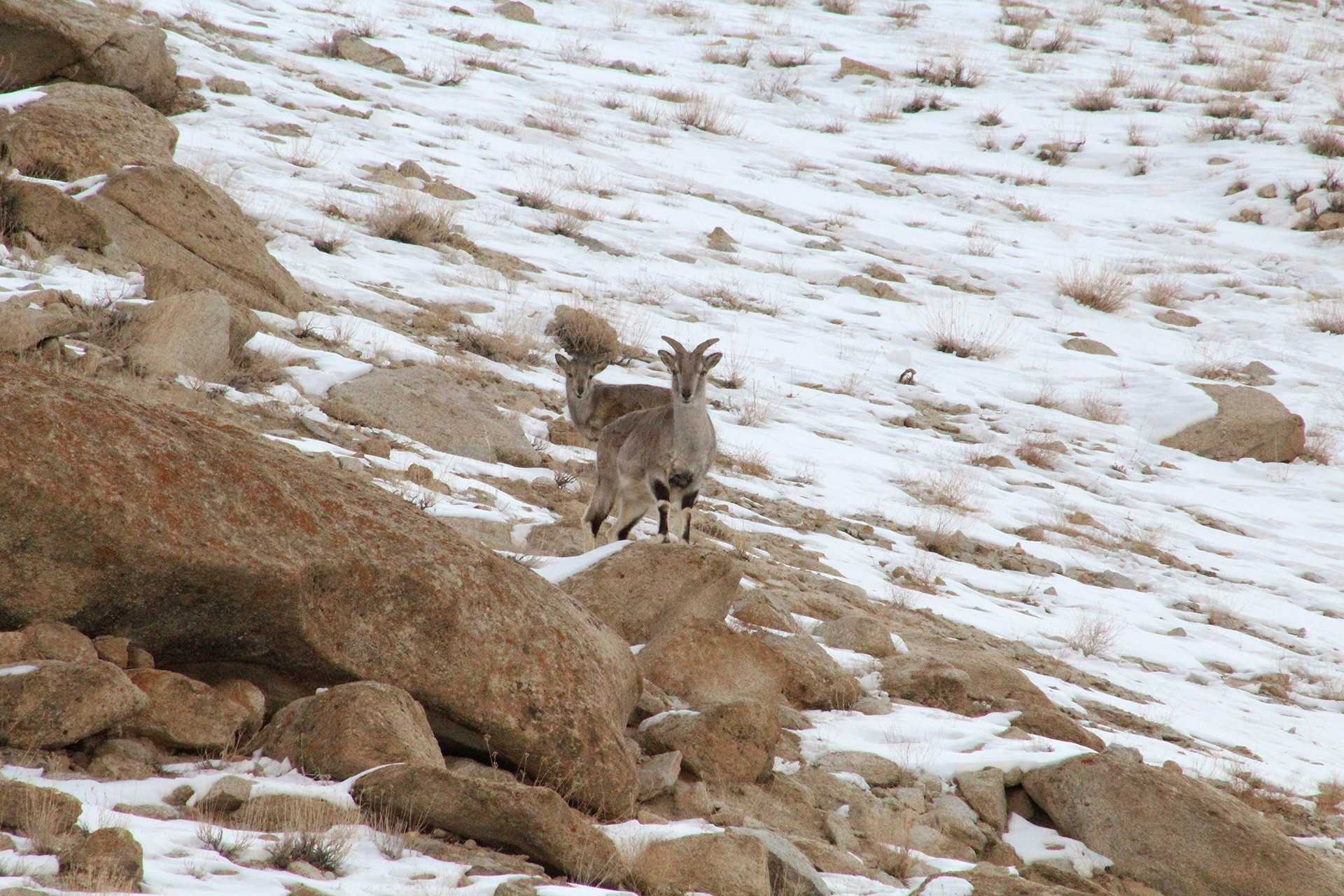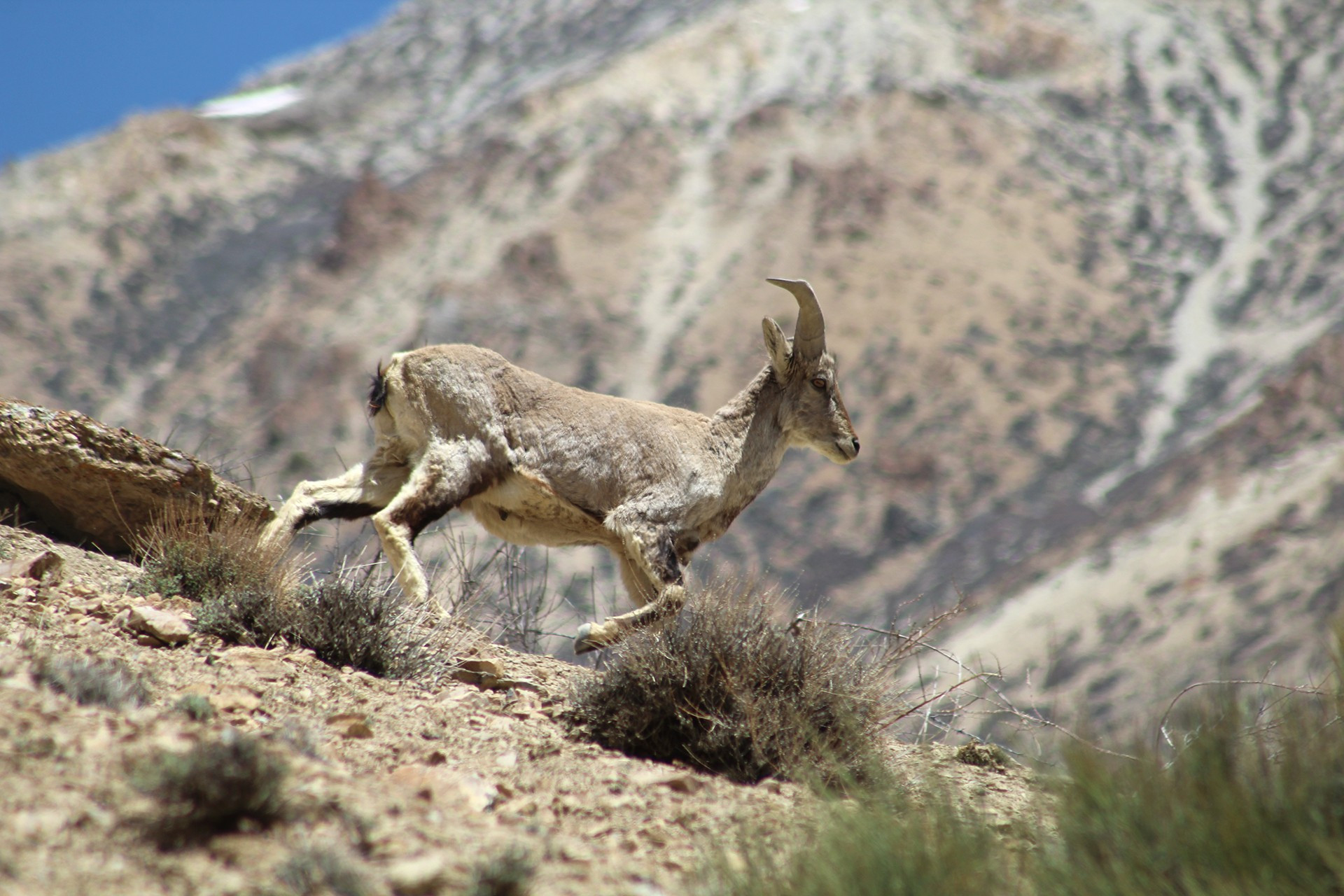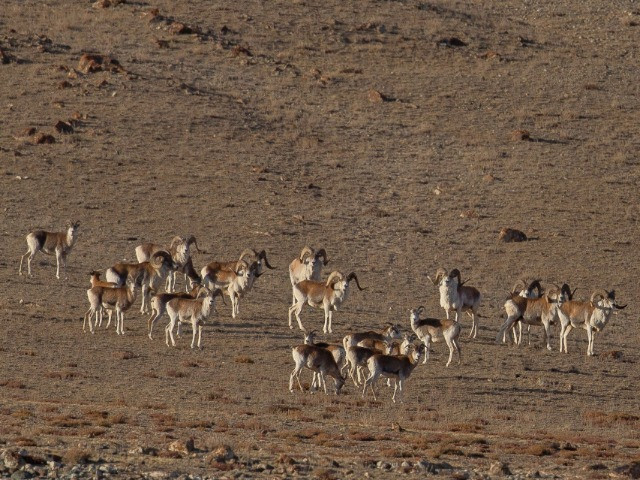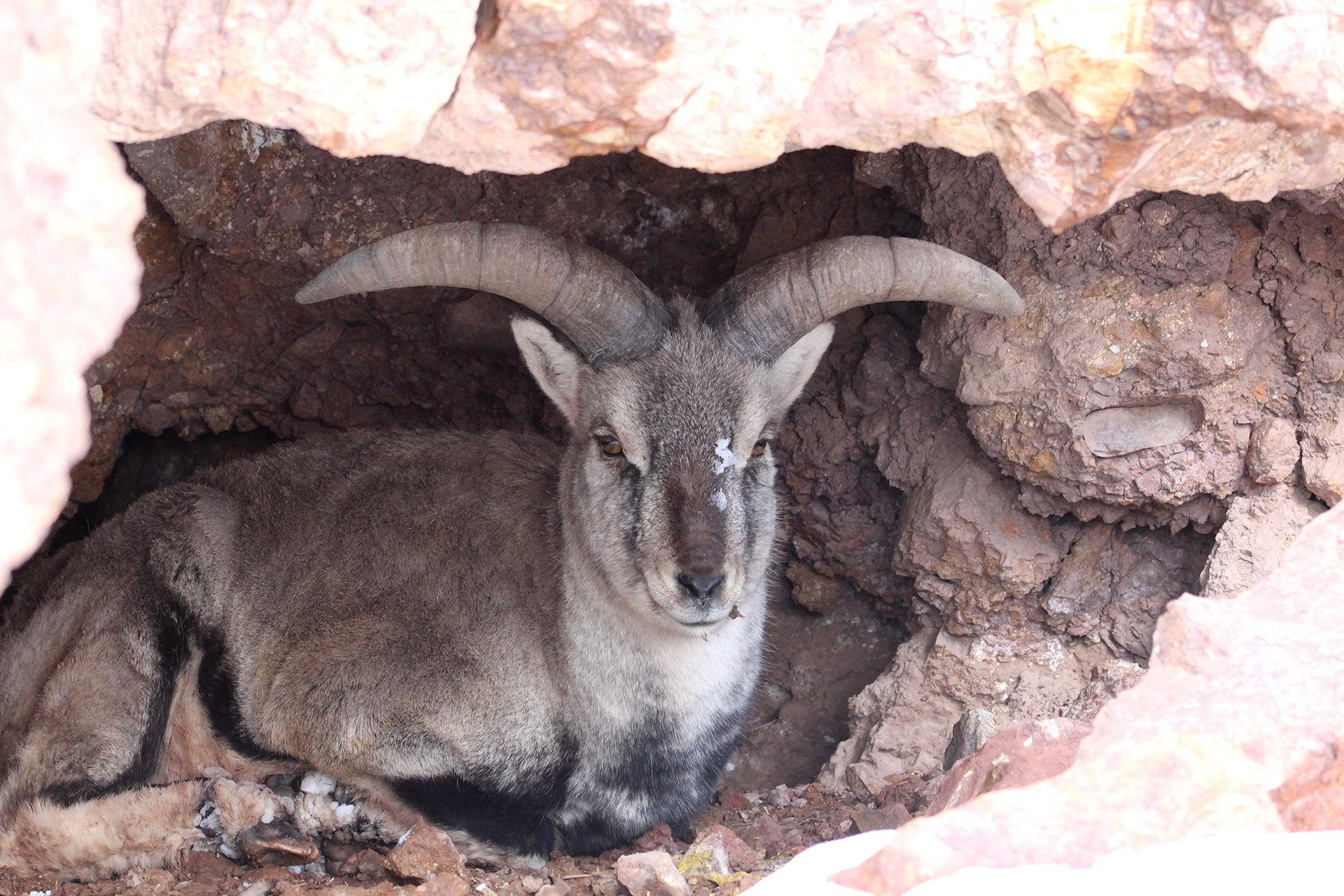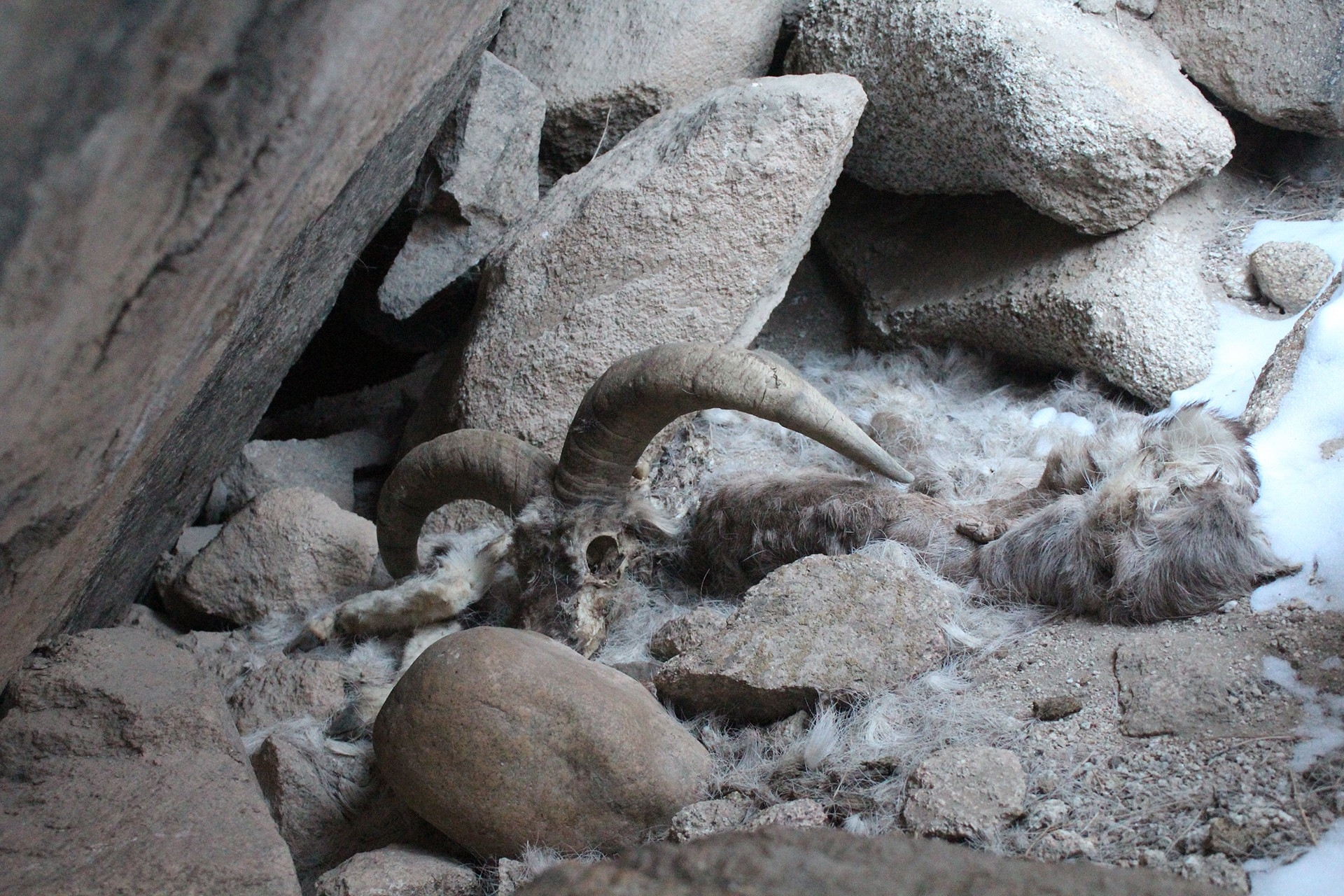No trip to the Indian Trans-Himalayas is complete without sightings of arguably our most stunning “Mountain Monarchs”, the Blue Sheep, locally referred to as Bharal.
Despite their name, Blue Sheep are neither blue nor are they sheep! Their short, dense coats are slate grey to pale brown (changing slightly between summer and winter) though they do have a bluish sheen. Morphological, behavioural and molecular analyses show that these ungulates (hooved mammals) are more closely related to goats (genus Capra) than sheep (genus Ovis).
Blue Sheep are also my most frequent work companions. I remember the first time I went out surveying Blue Sheep in the remote and frigid Gya-Miru region of Ladakh, as part of the Nature Conservation Foundation’s (NCF) High Altitude Program’s long-term population monitoring work. Sighting a group of these majestic creatures foraging atop a nearby 5,200m mountain top made me forget the six treacherous hours that we had just spent trying to find them.
Adult males can weigh up to 75 kilograms with horns sometimes growing to lengths of 84cm. Females are much smaller, weighing around 25-35 kilograms, with shorter and thinner horns.
Blue Sheep live in groups, often on treeless slopes, and in alpine meadows and shrubs. One advantage of living in groups is protection from predators. With more eyes on the lookout, the probability that you will be on the menu drastically decreases. Blue Sheep prefer relatively gentle hillsides, rather than steep, rugged slopes. Nonetheless, they tend to stay within the proximity of cliffs as they use these areas as an escape terrain from ambush predators such as the Snow Leopard.
Blue Sheep, like most other mountain ungulates, give birth around late spring/early summer so their young can make good use of the fresh forage that is available during this short window of time. During birthing, pregnant females are known to detach from their groups. They give birth in highly inaccessible rugged areas – that’s why it’s almost impossible to spot birthing Blue Sheep or females with extremely young kids. Studies have shown that these mountain ungulate mothers prefer the security of rugged and relatively inaccessible terrain) to safeguard their newborns from predators such as Snow Leopards, rather than being in the lush alpine meadows where forage is plentiful.
Across most of the Blue Sheep’s home range in India, communities follow Buddhism, which preaches non-violence and compassion towards living beings. This generally results in positive attitudes towards wildlife. Nonetheless, conflict with wildlife is an everyday reality. Blue Sheep are guilty of crop damage – across much of their range, they are known to graze on pea and apple crops, among others, that are cultivated by locals. Given the remoteness of these villages, the harsh winters and the short growing seasons, communities are hugely dependent on their pea and apple crops.
Sometimes spotting Blue Sheep can be harder than it seems. One day in May 2017, while we were working on a population estimating survey near Nemakurkur in Spiti Valley, we struggled to find them for over six hours. After traversing some of the highest mountain pastures, we stumbled upon this all-male group. Blue Sheep groups are varied: they can be all male, mixed or nursery groups (females with young). We saw this group grazing near a Caragana patch just as the air began to be filled with light summer snow. Truly worth the effort!
Even though on most occasions, Blue Sheep ran away from me upon being approached, I wish that they could know that no matter how many extreme mountain passes or frigid rivers I need to traverse to find them, I will keep coming back!
You may also like to read
Blue Sheep are generally shy, so we were baffled by this individual’s calmness despite us being barely 10m from it, somewhere in the frigid Tsaba Valley in Ladakh. Upon revisiting the site later that evening, we found that this male had been killed by the rare and elusive Eurasian Lynx, Lynx lynx (in fact, we saw the feline feeding on it). We wondered whether it had been suffering from an injury or disease and was unable to run. Sadly, we will never know.
Predators such as Snow Leopards are known to kill one ungulate (their preferred prey) every 8 days, averaging around 45 kills per year. Along with Ibex, Blue Sheep contribute to about 60 per cent of the prey base of endangered Snow Leopards, Panthera uncia, across their global range. Additionally, many local communities offer their horns as gifts to local deities, considering them a source of protection and blessing. That’s why a healthy wild ungulate population is key to sustaining these rare cats.
The Blue Sheep’s semi-arid, hostile mountain ecosystem is also home to a large number of agro-pastoralists who share pastures with wild ungulates. With growing numbers of domesticated sheep and goats, pasture degradation is increasingly a danger for Blue Sheep. This is in addition to a rise in forage competition and the risk of disease transmittance from livestock. Climate change is also causing patchy snowfall (the main source of precipitation in this area) which reduces forage.
Blue Sheep live in some of the highest and most beautiful regions on earth. As most mountain slopes get covered with deep snow in winter, these ungulates have to scout for the few areas that remain relatively snow-free during the coldest months. NCF has been monitoring populations of these species in this region for the past eight years, to better understand their population dynamics. We’ve found that most of these populations are relatively stable and healthy.
No day of fieldwork in the Himalayas is complete without a warm cup (or several cups!) of tea, especially in the freezing winter. On an early February morning in Argay Valley, Ladakh, we set out to find Blue Sheep without filling our flask with some strong “mountain” tea, known for being extra milky and sweet. Slightly depressed on realising what we’d done, we dreaded the prospect of a long, cold day of surveying. Incredibly, we found a tea kettle in a Caragana bush near a mountain spring! In it were perfectly preserved tea leaves, milk powder and a packet of sugar. Dorjay, a local field staff member, explained to me that this is a Ladakhi tradition where people leave bits of ration out, knowing that someday, someone will come across it and use it. Well, cheers to them!


